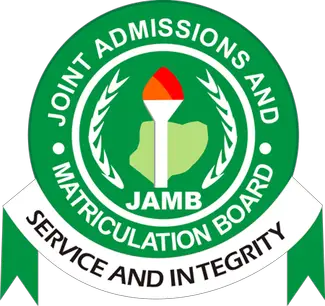The JAMB Arabic syllabus is the topic you must study for the UTME examination.
Using the JAMB syllabus to study for your examination is the open secret to getting a high score.
The JAMB Arabic syllabus also contains objectives for each topic. These objectives are what you must know for every topic you study.
This post contains the complete list of topics in the JAMB Arabic syllabus.
Let me know in the comment section if you have any questions.
JAMB Syllabus for Arabic

Comprehension
Candidates should be able to
i. Use appropriate words or phrases for specific thought
ii. Deduce the lesson in the passage
iii. Determine the main theme of the passage
iv. Give an appropriate title of a passage
v. Interpret the meanings of particular words.
Arabic Literature
Candidates should be able to
i. Identify pre-Islamic poetic traditions and conventions
ii. Identify and analyze the style of figurative expressions contained in a given Islamic literature
iii. Describe the aesthetic features in literary texts and assess their modern cultural values
iv. Evaluate areas of successful use of Arabic as a medium of West African novel and drama, analyse their contents and describe their major characteristics and plots.
Composition
Candidates should be able to
i. Use appropriate words for specific thoughts
ii. Use correct idiomatic expressions in Arabic
iii. Communicate effectively in Arabic
iv. Express ideas clearly in Arabic v. Demonstrate the use of common Arabic idioms and proverbs.
Grammar
Candidates should be able to
i. Identify the various forms of demonstrative and relative pronouns
ii. Compare gender markers in Arabic
iii. Identify the three basic characteristics of Arabic nouns
iv. Differentiate between singular and dual forms of nouns
v. Construct plural forms of singular nouns
vi. Identify construct phrases and their usages
vii. Differentiate between separable and inseparable pronouns
viii. Detect correct usage of adjectives, conjunctions and the permutative in Arabic sentences
ix. Apply correct preposition in a given sentence
x. Differentiate between transitive and intransitive verbs and use them in sentences
xi. Detect the perfect verbs and their forms
xii. Detect the imperfect verbs and their grammatical words in sentences
xiii. Detect the imperative verbs and their forms
xiv. Identify the kinds of modifiers and apply them in Arabic usage
xv. Differentiate between trilateral and derived verbs
xvi. Identify the types of derivatives
xvii. Apply the rules governing conditional sentences, detect them in sentences, construct them and differentiate them in normal sentences
xviii. Recognise and count Arabic numerals from 1 to 3000 and identify the intricacies involved in their usage
xix. Distinguish between active and passive voice and apply them in sentences
xx. Identify different types of adverbial clauses, the exempted, specification and the vocative as well as to detect and use them in standard Arabic.
Translation
Candidates should be able to
i. Use an appropriate Arabic word or phrase to convey the meaning of an English word or phrase
ii. Determine an appropriate English word or phrase for an Arabic statement
iii. Interpret idiomatic expressions in both Arabic and English
iv. Transfer ideas expressed in Arabic to English and vice versa
v. Communicate effectively in Arabic and English.
JAMB Recommended Textbookds for Arabic
1. COMPREHENSION, COMPOSITION AND TRANSLATION
1. بشير أحمد محيي الدين و المرضي مختار المرضي: المطالعة الواضحة. كنو: شركة طن لامى و أبنائه.
2. سيد حمرة مالك: الإنشاء العربى المتوسط (للمدارس الثانوية) إبادن مطبعة الجامعة ب. ل. س. 2005م.
3. عبد الفتاح صبرى و علي عمر بك: القراءة الرشيدة. الجزء 1 – 4 القاهرة: دار المعارف.
4. عبد الله الطيب: سمير التلاميذ الجزء 1 – 2 الخرطوم: مكتب النشر.
5. غرب ط. زاريا (1999م): كيف تكتب الإنشاء: كنو مطبعة جامعة بايرو.
6. محمد الأول أبوبكر و الآخرون: العربية الميسرة الجديدة للمرحلة الثانوية. إبادن: دار سبكترم للطباعة و النشر.
7. محمد بديع شريف و سليم حكيم و الحاج حسين آدمو: العربية الجديدة فى نيجيريا. الكتاب 1 – 3 إكيجا: لونغمان.
8. Adekilekun, A. L. A.: Learning Arabic Language, Ilorin.
9. Balogun, I. A. B. and Oseni Z. I. (1982) A Modern Arabic Course Book 1 Lagos: Islamic Publications Bureau.
10. Haywood, J. A. and Nahmad, H. M. (1965), A New Arabic Grammar of the Written Language, London: Lund Humphries.
11. Malik, S. H. A. (1982) A Guide to Arabic Composition, Books I & II, Lagos I.P.B.
12. Arabic newspapers, magazines and journals.
2. GRAMMAR
1. على الجارم و مصطفى أمين: النحو الواضح لمدارس المرحلة الأولية. الجرء 1 – 3. القاهرة: دار المعارف.
2. محمد أجروم الصنهاجى: متن الأجرومية. القاهرة.
3. محمد محيي الدين عبد الحميد: التحفة السنية بشرح المقدمة الأجرومية. بيروت: دار الفكر.
4. Haywood, J.A and Nahmad, H.M (1965), A New Arabic Grammar of the Written Language, London: Lund Humphries.
3. ARABIC LITERATURE
1- زكريا حسين: المأدبة الأدبية للطلاب العربية في إفريقيا أوتثى: دار النور 2004م NECO/WAEC
2- زكريا حسين: الطبقة العليا: دار النور أوتثى 2006م NECO/WAEC
3- مصطفى لطفي المنفلوطي: العبرات بيروت والقاهرة (2004) WAEC/NECO
4- جميل عبد الله الكنوي: ادفع بالتي هي أحسن مكتبة الحكمة الإسلامية كنو (2013) NECO/WAEC
5- أحمد الاسكندري والآخرون: المفصل في تاريخ الأدب العربي NECO/WAEC
TRANSLITERATION OF THE ABOVE BOOKS
1- ZAKARIYAU I. OSENI: AL-MA’DUBAT AL-ADABIYYAH.
2- ZAKARIYAU I. OSENI: AL-TABAQATAL-ULYA (THE UPPER CLASS)
3- MUSTAPHA LUTFI AL-MANFALUTI: AL-ABARAT.
4- JAMIL ABDULLAHI ALKANAWI: IDFA’A BIL LATI HIYA AHSAN.
5- AHMAD AL-ASKANDARI WAL AKHARUN: ALMUFASSAL FI TARIKH AL-ADABUL ARABI.
Let me know if you have any questions or need further clarification. I would love to assist you.
You can watch my videos on the Studentship YouTube Channel by clicking here.
Join my Facebook Group, Like my Facebook Page or Follow Me on WhatsApp for more interactive discussions.
